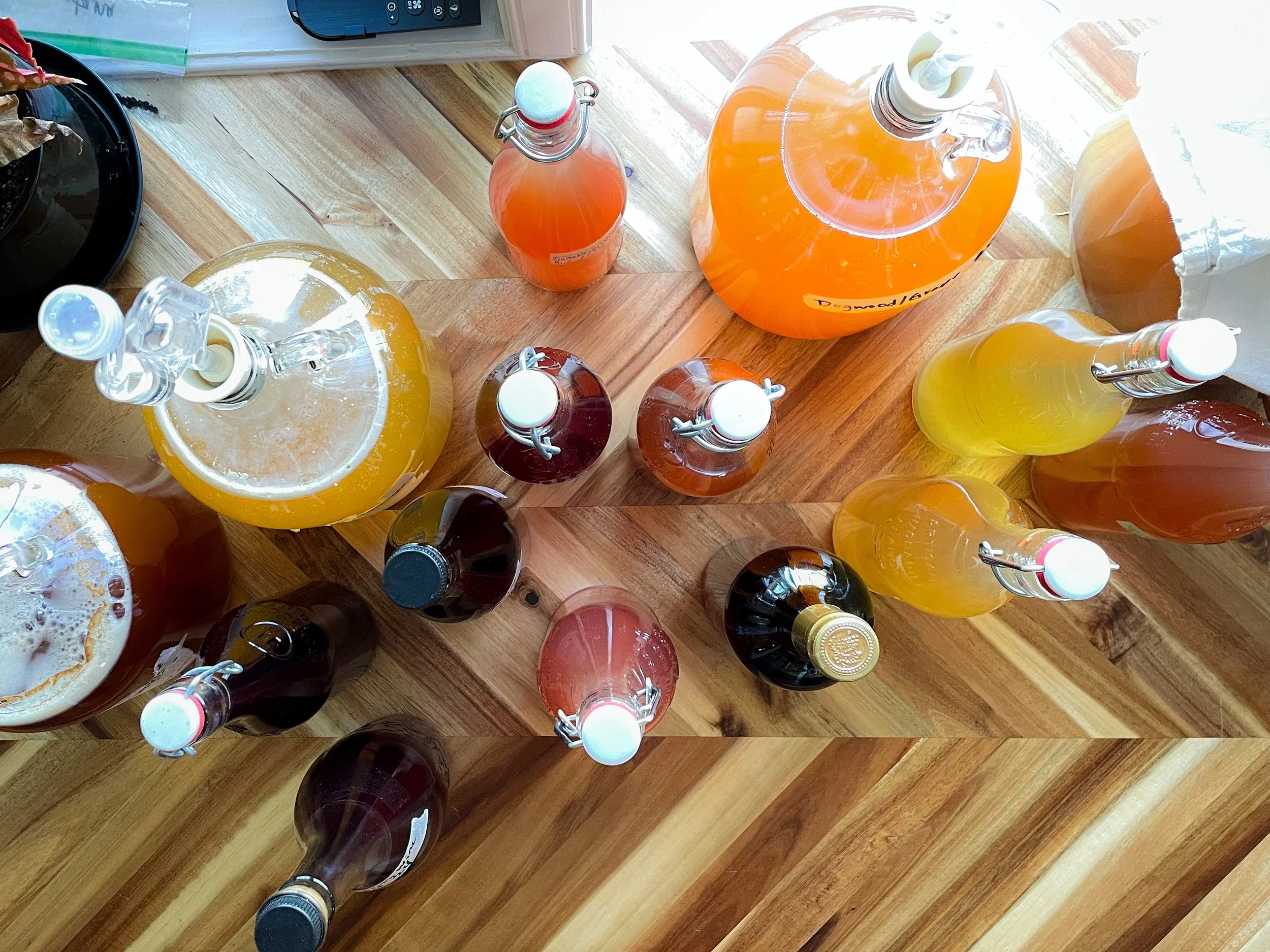Artisan Homeade Wine
Artisan Homemade Wine: A Beginner's Guide to Crafting Unique, Small-Batch Wines at Home
For the last year, I’ve been experimenting with making artisan homemade wine. It's incredibly easy to start, especially if you already enjoy making other fermented foods like kombucha, sauerkraut, or pickles. Like any hobby, you can start small and build your skills with each homemade wine batch, getting creative with fruits, herbs, and your unique taste preferences.
I was first introduced to “country wine” through Pascal Baudar's book, The Wildcrafting Brewer. His approach to foraging and using local plants inspired me to try my own variations. Then, I discovered a homesteader on TikTok who also made simple, natural homemade wine and used her method as a base for my process.
My homemade wine experiments have led me to make all sorts of wines from garden fruits, herbs, sugar, and yeast. It’s been rewarding to use what I grow and explore pairing fruit with herbs for one-of-a-kind flavors, connecting with nature and intuition. Here, I’ll share my basic process so you can begin your homemade winemaking journey. Remember, artisan wine making is meant to be fun! There are traditional recipes with specific ingredients, but I prefer a more "pure" approach, free of additives like sulfites or clearing agents.
Getting Started with Homemade Wine Making
Here’s what you’ll need:
Fruit or fruit juice: Start with about 4 cups of any fruit or juice you like.
Sugar: 4 cups of organic cane sugar or brown sugar.
Flavor enhancers: Herbs and spices add complexity.
Yeast: A packet of bread or wine yeast.
Fermentation vessel: I recommend glass. Swing-top bottles are ideal for storing your wine.
For this recipe, I’m using strawberries as the base fruit, which is versatile and easy for beginners.
The Basic Recipe for a Gallon of Artisan Homemade Wine
Ingredients:
4 Qt water
4 C sugar
4 C fresh or frozen fruit
1/2 C herbs or spices (optional)
2 T or 1 packet of yeast
Preparation:
Heat your fruit on the stove, mashing as it cooks down to release juices.
Add sugar and stir, then add water and bring to a low boil.
Once mixed, turn off the stove and add herbs or spices. Let cool.
Pour everything into your fermentation vessel. Add yeast and stir.
Cover with a cloth to keep fruit flies out. Stir at least twice a day for 30 days.
After about a month, taste your country wine. You can back-sweeten it if you prefer a sweeter flavor, though this may restart fermentation. To age and clear your wine, you can “rack” it by transferring it to another vessel, or bottle it directly.
Strawberry wine when first transfered to the fermentation vessel.
24 hours after adding yeast. Notice the color shift!
Several weeks into the fermentation process. Notice the layer of sediment at the bottom of the vessel.
Tips for Successful Homemade Winemaking
Keep notes on each batch, noting what worked and what you might change next time. Try tasting your wine at 3, 6, and 9 months to see how aging affects the flavor.
Crafting homemade wine can be an enjoyable journey of experimentation and creativity. Keep an eye out for more recipes as I continue to explore this process myself.
Happy brewing!
My collection of artisan homemade wine from 2024.







